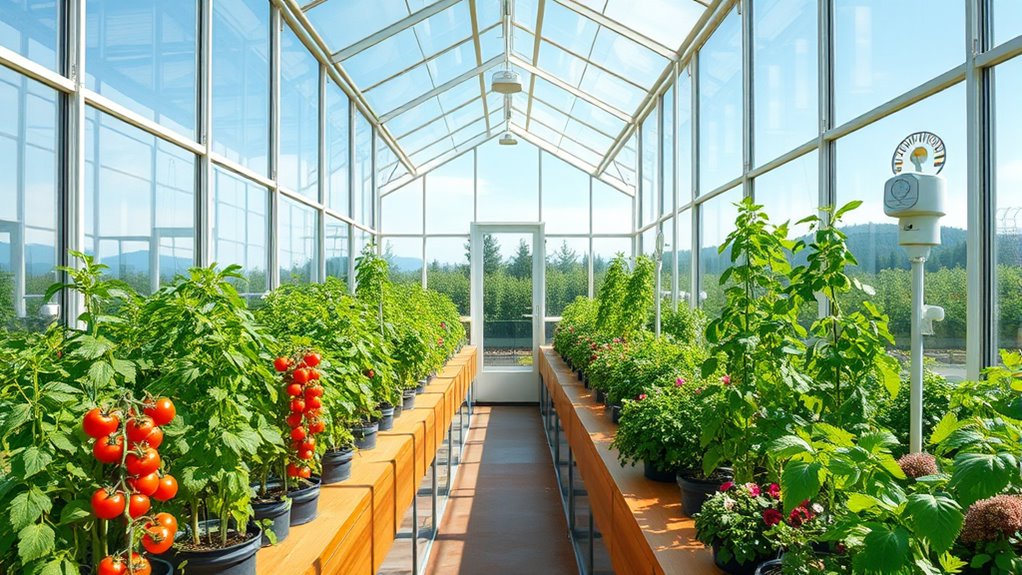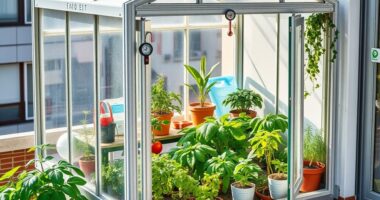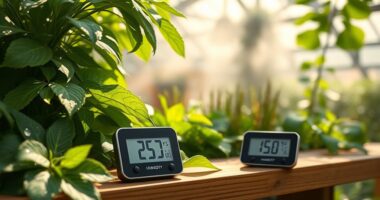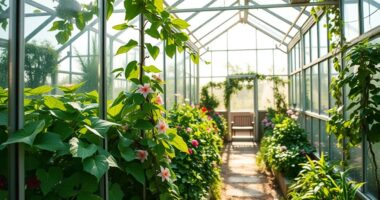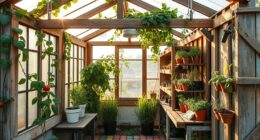Starting a greenhouse involves understanding pest management, plant care, and environmental controls. You’ll want to implement regular sanitation, monitor pests early, and use biological controls like beneficial insects to reduce chemical use. Physical barriers such as insect screens and sticky traps help prevent and catch pests. Combining cultural practices, targeted pesticides, and biological methods creates an effective integrated pest management system. Keep these strategies in mind, and you’ll build a healthy, productive greenhouse—more details await as you continue to explore.
Key Takeaways
- Choose the right location, size, and structure for your greenhouse based on climate, space, and crop needs.
- Implement integrated pest management, including sanitation, biological controls, physical barriers, and monitoring.
- Use environmental controls like ventilation, heating, and shading to maintain optimal growing conditions.
- Select suitable hydroponic systems and crops, ensuring proper nutrient and water management for healthy growth.
- Regularly inspect and maintain your greenhouse to prevent pests, diseases, and structural issues for long-term success.
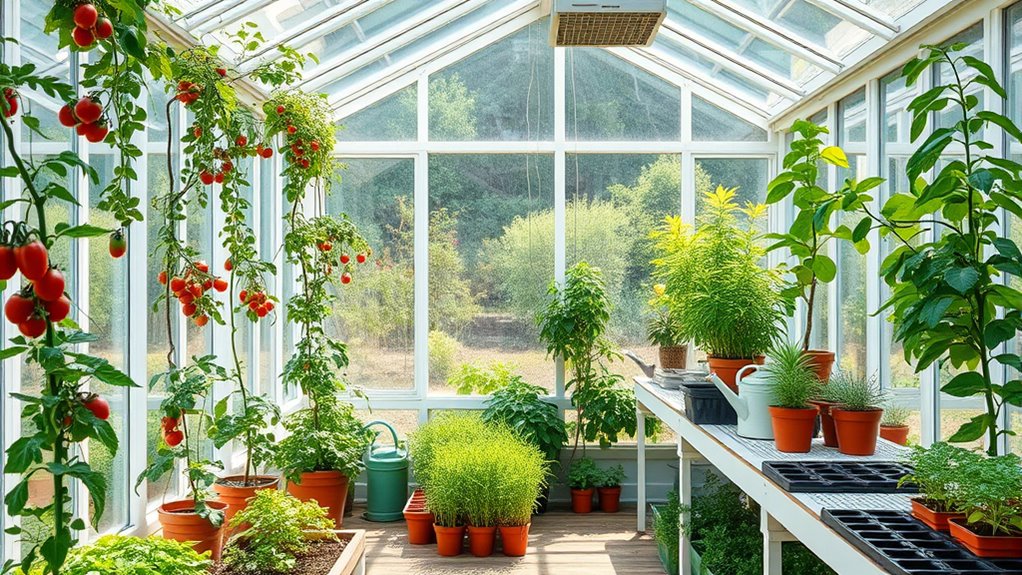
Pest management is another vital aspect of maintaining a healthy greenhouse environment. Since pests can quickly damage crops and spread disease, you need effective strategies to keep them at bay. In a greenhouse, pest control begins with good sanitation—regularly cleaning surfaces and eliminating debris helps remove hiding spots for insects and pests. You should also monitor plants frequently for early signs of infestation. Biological control methods, like introducing beneficial insects such as ladybugs or predatory mites, are eco-friendly options that help keep pest populations in check without relying on chemical pesticides. Additionally, physical barriers like insect screens on vents and doors can prevent pests from entering your greenhouse altogether.
Implementing integrated pest management (IPM) strategies helps you strike a balance between controlling pests and protecting your plants. IPM combines cultural practices, biological controls, and targeted use of pesticides when necessary. For example, rotating crops and removing infested plants can reduce pest numbers naturally. Using sticky traps can catch flying insects before they cause significant damage. When chemical interventions are needed, selecting environmentally safe options and applying them carefully minimizes harm to beneficial insects and your plants. Furthermore, utilizing high-quality projectors with accurate color reproduction and contrast can help you better monitor plant health and identify pest issues early, especially in detailed imaging scenarios.
Combining hydroponic systems with smart pest management creates a resilient environment where your plants can flourish. The controlled conditions of a greenhouse, alongside these techniques, mean you can grow a wide variety of crops with fewer worries about pests and disease. Remember, maintaining an ideal environment isn’t just about providing light and water; it’s also about creating a balanced ecosystem that discourages pests and supports healthy, vigorous plants. By mastering these foundational concepts—hydroponic cultivation and effective pest management—you set yourself up for success in any greenhouse venture.
Frequently Asked Questions
What Are the Best Plants for Beginners in a Greenhouse?
You should start with easy-to-grow plants like succulent varieties and herbs, perfect for beginners. Succulents need minimal watering and thrive in greenhouse conditions, making them low-maintenance. Choose herbs like basil, mint, or parsley that grow quickly and can be used fresh in your kitchen. These plants help you learn greenhouse basics while enjoying the satisfaction of growing your own food and decorative greenery.
How Do I Control Pests Without Chemicals?
To control pests naturally, start with biological pest control by introducing beneficial insects like ladybugs or predatory nematodes that target harmful pests. Use natural repellents such as neem oil or garlic spray to deter insects without chemicals. Keep your greenhouse clean, remove dead plant material, and make certain proper airflow to prevent infestations. Regular monitoring helps catch problems early, allowing effective pest management without relying on harmful chemicals.
What Is the Ideal Temperature Range for Most Plants?
Did you know that most plants thrive between 65°F and 75°F? You should aim to keep your greenhouse climate within this ideal temperature range for maximum growth. Maintaining proper plant temperature helps prevent stress and diseases. Use a thermometer to monitor your greenhouse climate regularly, and adjust heaters or fans as needed. Staying within this range ensures your plants stay healthy, vigorous, and productive.
How Often Should I Water My Greenhouse Plants?
You should water your greenhouse plants when their soil feels dry about an inch below the surface, usually every 2-3 days. Maintaining a consistent watering schedule guarantees proper plant hydration. Keep an eye on your plants for signs of overwatering or underwatering, and adjust accordingly. Remember, different plants have unique needs, so tailoring your watering schedule helps promote healthy growth and prevents common issues like root rot or dehydration.
Can I Grow Year-Round in Any Climate?
Yes, you can grow year-round in your greenhouse, but you’ll need to make seasonal adjustments based on your climate considerations. In colder areas, you might need additional heating, insulation, or supplemental lighting, while in warmer climates, cooling and ventilation are key. By understanding your local weather patterns and adjusting your greenhouse conditions accordingly, you can successfully grow plants throughout the year, regardless of the climate.
Conclusion
Now that you know the basics, you’re ready to start your greenhouse journey. Prepare your space, plan your plants, and maintain your environment with care. Learn, adapt, and grow—because each step brings you closer to thriving plants and a successful greenhouse. With patience, passion, and persistence, you’ll turn your green dreams into reality. So, get started, stay dedicated, and watch your greenhouse flourish—because your success begins with the knowledge you’ve gained today.
